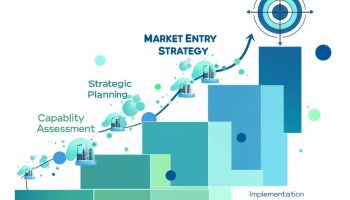
Understanding Process Excellence Framework
A process excellence framework offers a structured method for your organization to evaluate, improve, and optimize operational processes. This comprehensive approach streamlines workflows, boosts efficiency, and promotes ongoing improvement across all business functions.
How Process Excellence Framework Drives Organizational Success
The process excellence framework helps you identify inefficiencies, eliminate waste, and create maximum value throughout operations. By applying this structured approach, your company can boost productivity, lower costs, and enhance customer satisfaction while maintaining consistent service delivery. This strategic tool aligns operational activities with business goals, enabling your organization to respond quickly to market shifts and competitive pressures while building a culture focused on continuous improvement and operational excellence.
Process excellence frameworks don’t just fix problems—they transform how your business operates. They establish clear standards for measuring performance and provide the foundation for sustainable growth. Your teams gain clarity about expectations and become empowered to make data-driven decisions.
When implemented correctly, these frameworks create a common language across departments, breaking down silos that often hinder progress. They’ll help your organization achieve better results with fewer resources by focusing on what matters most to your customers and stakeholders.
The best process excellence initiatives combine proven methodologies like Lean, Six Sigma, and Total Quality Management with modern approaches to change management and digital transformation. This balanced approach ensures your improvement efforts deliver both immediate wins and long-term strategic advantages.
Organizations that implement a process excellence framework can experience productivity gains of up to 30% and cost reductions of 20% or more.
Implementing a Process Excellence Framework
Implementing a process excellence framework transforms your organization’s operations through systematic optimization and continuous improvement. This strategic approach enhances quality while creating sustainable competitive advantages for your business. The framework connects your strategic objectives, operational execution, and performance measurement to deliver consistent results in changing market conditions.
Your organization’s success depends on establishing clear processes that align with business goals while remaining adaptable. The process excellence framework serves as your roadmap for operational efficiency, quality management, and innovation. This structured methodology requires commitment from everyone in your organization—executives must set clear expectations while frontline staff execute standardized procedures consistently.
Rather than viewing it as a temporary initiative, consider process excellence as an ongoing journey of operational refinement. The framework helps you identify improvement opportunities, standardize best practices, and measure performance against key metrics.
1. Establish Clear Process Documentation
Developing a robust process excellence framework begins with comprehensive documentation. Process maps serve as visual representations that help everyone understand workflow sequences and decision points. When creating these maps, incorporate both high-level and detailed perspectives to establish clarity across your organization.
Document standard operating procedures (SOPs) that outline step-by-step instructions for executing key processes. These SOPs become the foundation of your process excellence framework, ensuring consistency and quality in execution. Implementing proper version control prevents confusion and ensures teams always reference current documentation.
Clearly define roles and responsibilities within each process to eliminate ambiguity about who handles specific tasks. This accountability structure is essential for process excellence as it prevents gaps in execution and reduces redundancies. Additionally, establish knowledge management repositories where process documentation, best practices, and lessons learned can be centrally stored and easily accessed by team members.
Set up systematic review cycles to keep documentation current as processes evolve, making documentation maintenance an ongoing part of your excellence framework rather than a one-time effort.
2. Implement Performance Metrics
Establishing robust performance metrics is a critical component of any process excellence framework. You need to clearly define Key Performance Indicators (KPIs) that align with your operational goals and strategic objectives. These metrics provide the quantifiable evidence needed to evaluate process effectiveness and identify improvement areas.
Setting up appropriate measurement systems allows you to collect relevant data across your process excellence framework. Consider implementing strategic dashboards that present real-time information in an accessible format. These visual tools help teams quickly identify trends, spot anomalies, and make data-driven decisions.
Creating monitoring dashboards serves as the nerve center of your process excellence initiatives. Effective dashboards should:
- Display critical metrics at a glance
- Provide drill-down capabilities for deeper analysis
- Include trend indicators and performance thresholds
- Offer customization options for different stakeholders
Establishing reporting frameworks ensures consistency in how performance data is communicated across the organization. Your framework should define reporting frequency, formats, and distribution channels. Effective reporting formats help stakeholders understand performance trends and support timely decision-making.
Finally, develop feedback mechanisms that transform measurement into action. These systems should capture insights from various sources and feed them directly into your improvement cycle, creating a continuous loop of measurement and enhancement within your process excellence framework.
Expert Insight: To enhance process excellence, clearly define KPIs aligned with your strategic objectives and implement real-time dashboards for data visualization. Establish consistent reporting frameworks to communicate performance trends effectively. Finally, create feedback mechanisms to turn insights into actionable improvements, fostering a culture of continuous enhancement.
3. Deploy Digital Solutions for Process Excellence Framework
Integrating technology into your process excellence framework transforms operational efficiency and creates sustainable competitive advantages. Begin by identifying automation opportunities within your core processes where manual tasks consume valuable resources. Look for repetitive, rule-based activities that could benefit from automation to reduce errors and increase throughput.
Selecting appropriate technology tools requires careful evaluation against your specific process excellence framework needs. Consider factors like scalability, integration capabilities, and total cost of ownership. Effective project collaboration between IT and business teams ensures the selected tools align with operational requirements.
The integration of systems and platforms represents a critical phase in deploying digital solutions. Connect disparate systems to eliminate data silos and create a unified information environment. This integration enables:
- Real-time data exchange between applications
- Consistent information across departments
- Elimination of duplicate data entry
- Enhanced visibility across the value chain
Implementing workflow automation streamlines processes by routing tasks, documents, and information through predefined paths. This reduces cycle times and ensures consistency in execution while enabling data-driven decision making through analytics capabilities that transform raw data into actionable insights for continuous process improvement.
Expert Insight: Deploying digital solutions enhances process excellence by identifying automation opportunities and integrating systems. Select technology that aligns with your needs for scalability and integration, and foster collaboration between IT and business teams. Implementing workflow automation streamlines processes, reduces errors, and enables data-driven decision-making for continuous improvement.
4. Build Governance Structure for Process Excellence Framework
Building an effective governance structure is crucial to sustaining your process excellence framework. You need to create a process ownership framework that clearly defines who is accountable for each process component. This establishes clear lines of responsibility and ensures that every process has a dedicated champion driving continuous improvement.
Establishing compliance checkpoints throughout your processes helps maintain adherence to your process excellence framework. These checkpoints serve as quality gates that verify processes are following established protocols before proceeding to subsequent stages. You can integrate these checkpoints into existing workflows to minimize disruption while maximizing compliance.
To maintain process integrity, define comprehensive audit procedures that regularly evaluate process performance against established standards. These audits should examine both process design and execution to identify deviations that could compromise your excellence framework.
Developing risk management protocols is essential for identifying and mitigating potential threats to your processes. Consider these key components for your protocol:
- Risk identification workshops with cross-functional teams
- Risk assessment matrices to prioritize response efforts
- Mitigation strategies for high-priority risks
- Regular risk reviews and updates
Finally, set up change control processes that manage modifications to your process excellence framework in a structured way. This ensures that changes are properly evaluated, documented, and communicated to all stakeholders before implementation.
Expert Insight: To build an effective governance structure for your process excellence framework, clearly define process ownership and accountability. Implement compliance checkpoints within workflows to ensure adherence, and establish comprehensive audit procedures to evaluate performance regularly. Additionally, develop risk management protocols and structured change control processes to maintain process integrity.
5. Drive Continuous Improvement
Integrating continuous improvement into your process excellence framework ensures your organization stays competitive and efficient. The PDCA (Plan-Do-Check-Act) cycle forms the backbone of sustainable improvement initiatives. First, plan your improvement approach by identifying process gaps and establishing clear objectives. Then implement your changes in controlled environments before scaling them across the organization.
Regular process reviews are essential for maintaining your process excellence framework. Schedule quarterly assessments to evaluate performance metrics, identify bottlenecks, and determine if processes are still aligned with organizational goals. These reviews should be data-driven, focusing on both quantitative measures and qualitative insights from stakeholders.
Employee feedback is invaluable for process improvement. Create formal and informal channels for staff to share observations and suggestions about existing processes. Consider implementing:
- Digital suggestion platforms
- Process improvement workshops
- Cross-functional improvement teams
- Regular pulse surveys
Monitoring industry best practices through continuous improvement methodologies ensures your processes remain competitive. Attend industry conferences, participate in benchmarking studies, and engage with professional networks to stay informed about emerging trends and technologies.
Successfully executing improvement initiatives requires clear ownership, realistic timelines, and dedicated resources. Prioritize initiatives based on business impact and feasibility, then track progress using visual management tools and regular status updates.
Expert Insight: Drive continuous improvement by integrating the PDCA cycle into your framework, ensuring regular process reviews to maintain alignment with goals. Encourage employee feedback through various channels and prioritize initiatives based on impact and feasibility, using clear ownership and visual management to track progress effectively.
6. Align with Strategic Goals
Creating a process excellence framework requires ensuring all processes directly support your organization’s strategic objectives. By linking processes to business goals, you can drive meaningful improvements that contribute to overall success. Start by mapping each process to specific strategic objectives, identifying how each contributes to your organization’s mission.
Resource optimization is a critical component when aligning processes with strategy. Analyze your current resource allocation and identify opportunities to eliminate waste while maximizing value creation. This might involve reallocating staff, adjusting budgets, or implementing optimization methods that enhance efficiency without compromising quality.
Value stream mapping provides a powerful visualization technique within your process excellence framework. This approach helps you:
- Identify value-adding and non-value-adding activities
- Spotlight bottlenecks and inefficiencies
- Prioritize improvement opportunities with strategic impact
- Connect process outputs to customer requirements
Developing strategic roadmaps enables you to plan process improvements that align with long-term organizational goals. These roadmaps should outline how process changes will roll out over time, including dependencies, resource requirements, and expected outcomes.
Monitor the business impact of your process excellence initiatives through regular reviews and performance dashboards. Tracking metrics like cost savings, productivity gains, and customer satisfaction improvements helps demonstrate how process excellence directly contributes to strategic success.
7. Enhance Customer Focus
Implementing a process excellence framework requires understanding your customers’ needs at every interaction point. Map customer journeys to visualize how they engage with your organization across different touchpoints. This mapping exercise helps identify where your processes directly impact customer experience.
Identify pain points within these journeys that might frustrate customers or create inefficiencies in your process excellence framework. Use tools like customer interviews, surveys, and analytics to pinpoint exactly where processes break down from the customer’s perspective.
Measure customer satisfaction systematically through Net Promoter Scores, Customer Effort Scores, or satisfaction surveys. These metrics should be integrated into your overall process excellence framework dashboard to ensure customer-centric improvements.
Implement feedback loops that capture customer input and quickly translate it into actionable process improvements. Active listening techniques are essential when collecting this feedback to understand underlying needs.
Finally, optimize touchpoints by redesigning processes specifically to enhance customer interaction points. Consider implementing continuous improvement methodologies for customer-facing processes, ensuring they remain responsive to changing expectations and needs.
A process excellence framework provides a structured approach to optimizing organizational workflows, ensuring consistency, efficiency, and continuous improvement across all operational areas. By implementing the seven key steps outlined in this article, organizations can systematically transform their processes from documentation and metrics to governance and customer focus, creating a foundation for sustainable operational excellence.
The process excellence framework is essential for modern enterprises facing increasing competitive pressures and rapidly evolving customer expectations. Organizations implementing this framework gain critical advantages including reduced operational costs, enhanced quality control, increased agility to market changes, improved employee productivity, and strengthened compliance capabilities—all contributing directly to improved bottom-line performance and market positioning.
Key Takeaways for Process Excellence Implementation
The establishment of a robust process excellence framework represents a strategic investment in organizational capability and operational efficiency. This framework provides the structure needed to standardize operations, measure performance, leverage technology, ensure governance, drive continuous improvement, align with strategic goals, and enhance customer satisfaction.
| Component | Key Elements | Benefits |
|---|---|---|
| Documentation | Process maps, SOPs, role definitions | Clarity, consistency, knowledge transfer |
| Performance Metrics | KPIs, dashboards, feedback mechanisms | Data-driven decisions, visibility, accountability |
| Digital Solutions | Automation, system integration | Efficiency, error reduction, scalability |
| Governance | Process ownership, compliance checkpoints | Sustainability, risk management, control |
| Continuous Improvement | PDCA cycle, process reviews | Competitiveness, adaptation, innovation |
| Strategic Alignment | Value stream mapping, resource optimization | Purpose-driven processes, waste elimination |
| Customer Focus | Journey mapping, feedback loops | Enhanced satisfaction, loyalty, revenue |
Steps to Implement Your Process Excellence Framework
- Conduct a comprehensive audit of existing processes and documentation
- Define and document key processes with clear roles and responsibilities
- Establish relevant KPIs aligned with strategic objectives for each process
- Implement performance monitoring dashboards for real-time visibility
- Identify and deploy appropriate digital solutions for process automation
- Create a governance structure with clear ownership and compliance mechanisms
- Establish regular review cycles and continuous improvement methodologies
- Align all processes with organizational strategic goals through value stream mapping
- Develop customer journey maps to identify experience enhancement opportunities
- Implement training programs to ensure organization-wide understanding and adoption
Frequently Asked Questions
What is a process excellence framework and why is it important? A process excellence framework is a structured approach for optimizing, standardizing, and continuously improving organizational workflows. It’s important because it increases operational efficiency, reduces costs, improves quality consistency, enhances customer satisfaction, and enables faster adaptation to market changes.
How long does it typically take to implement a process excellence framework? Implementation timeframes vary based on organizational size and complexity, but typically range from 6-18 months for the initial framework setup. However, process excellence should be viewed as an ongoing journey rather than a one-time project, with continuous refinement over time.
What resources are required to establish a process excellence framework? Successful implementation requires executive sponsorship, dedicated process owners, appropriate technology tools, training resources, and potentially external expertise. The most critical resource is organizational commitment to the cultural shift toward process-centric operations.
How do we measure the ROI of our process excellence initiatives? ROI can be measured through metrics including reduced operational costs, decreased cycle times, improved quality (fewer defects/rework), enhanced customer satisfaction scores, increased productivity per employee, and reduced compliance issues or risks.
Should we implement all seven steps at once or can we take a phased approach? Most organizations benefit from a phased implementation approach, starting with documentation and metrics before moving to more complex elements like governance and digital transformation. This allows for building capability and demonstrating value incrementally.
How do we overcome resistance to change when implementing a process excellence framework? Address resistance by clearly communicating benefits, involving employees in process design, providing adequate training, celebrating early wins, and having visible leadership support. Demonstrate how process excellence makes work easier rather than just adding bureaucracy.






